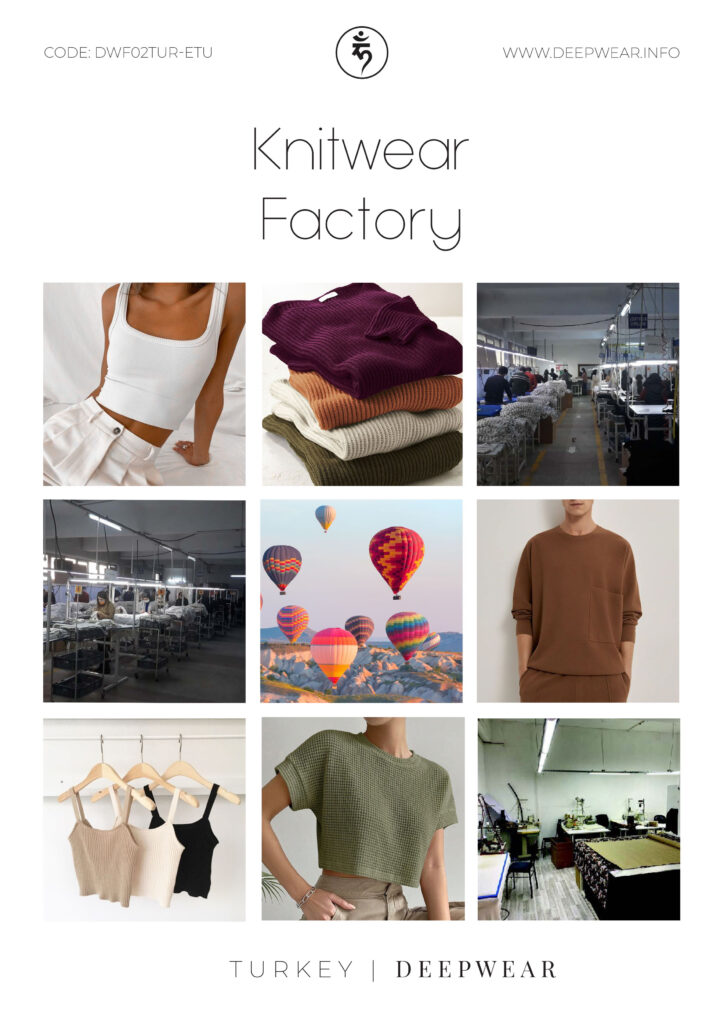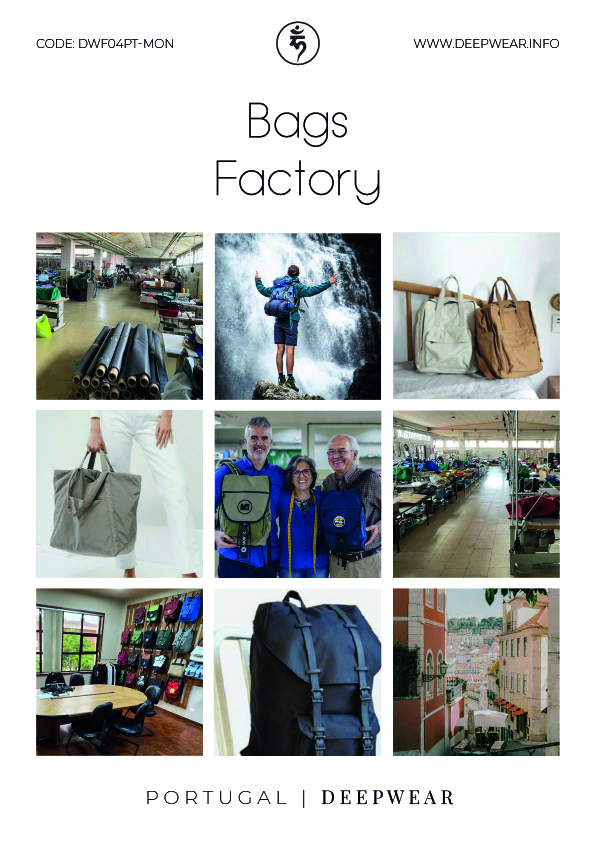If we were to look at the role and importance of calendars in any venture we would have to travel back in time thousands of years. Long back people had understood the importance of noticing patterns and keeping track of the changes happening in a year. And just like every other field, the Fashion Calendar has its own significance and importance. As established and emerging fashion brands and labels, we all understand the importance the Fashion Calendar holds. They help us plan our time, decide when to start working on the next collection, keep a track of the progress, give a deadline to our vendors and help us implement our strategies efficiently. While it does seem like a simpler task, planning and creating a fashion calendar that works for your brand and your clients can be much more complicated and detailed than that.
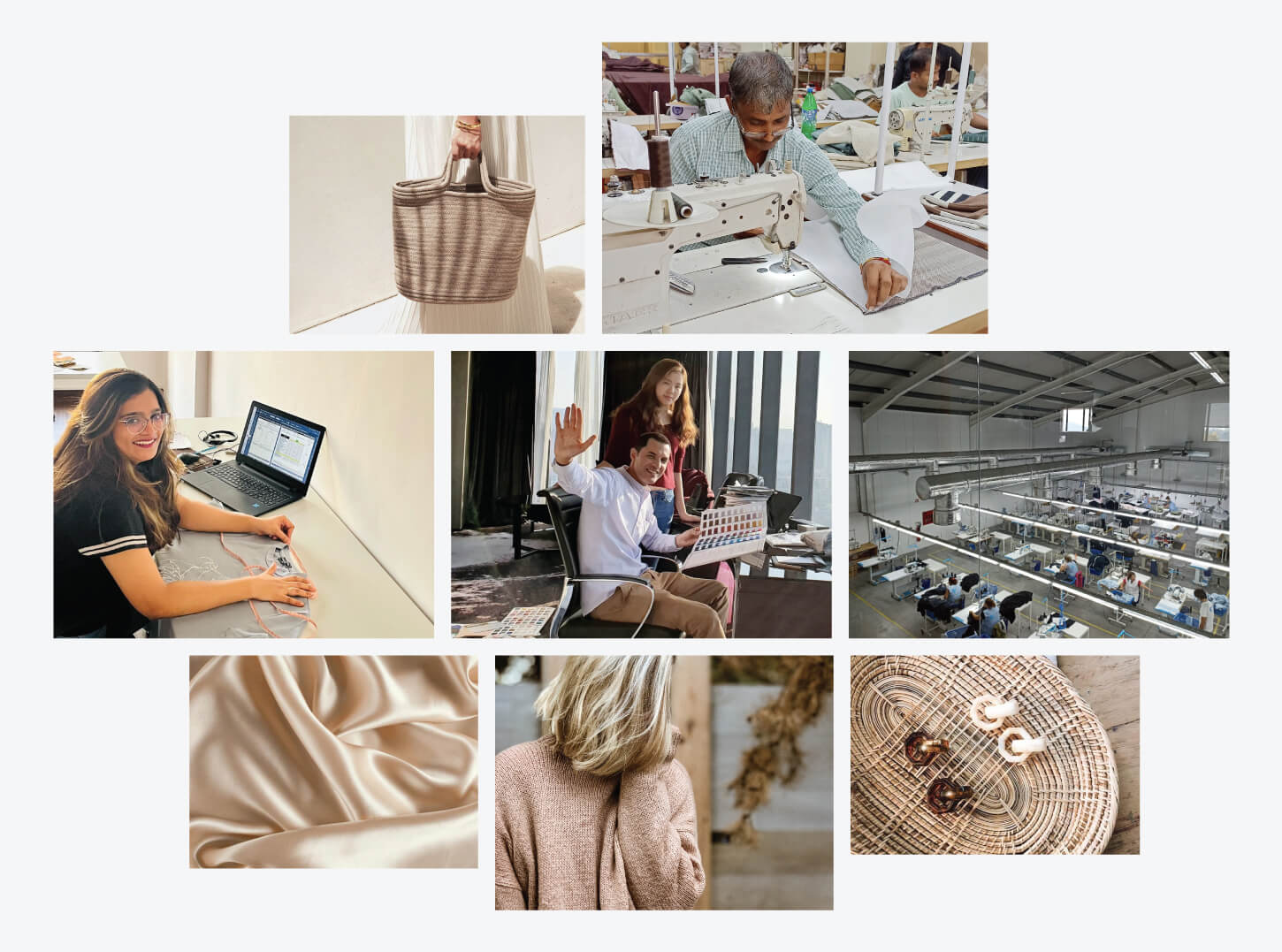
What is the difference between fashion seasons and seasonal fashion?
In a general calendar year, we have four seasons. We have spring, summer, fall/Autumn, Winter. But in a fashion calendar, typically we have two major seasons. Spring-summer(S/S) and Autumn winter(A/W). Spring summer begins in late February and ends in July, Autumn-Winter starts in August and runs till January. While the bracket of each season and the months they run is fairly subjective, this is the general idea of the seasons. We also have seasons like Pre-fall, Spring in the middle that are short-lived.
Seasonal Fashion pieces are exceptions that are not a part of the seasons mentioned above. For example Monsoon clothing, or festive season clothing. These categories are based on the geographic location and target audience, and not based on the SS/AW fashion seasons.
Why is it important to plan according to fashion seasons?
Planning your time according to the Fashion calendar ensures that you have your inventory in hand at the right time and can offer and display your fashion products at the Ideal time. It makes your supply chain efficient and makes sure your Fashion products reach the market when the sales possibility is the best. It also helps clear out any confusion regarding what to start when and gives you enough room of ease to invest some time on things other than product development and Fashion manufacturing on things like organization, Imaging/photography, marketing, etc.
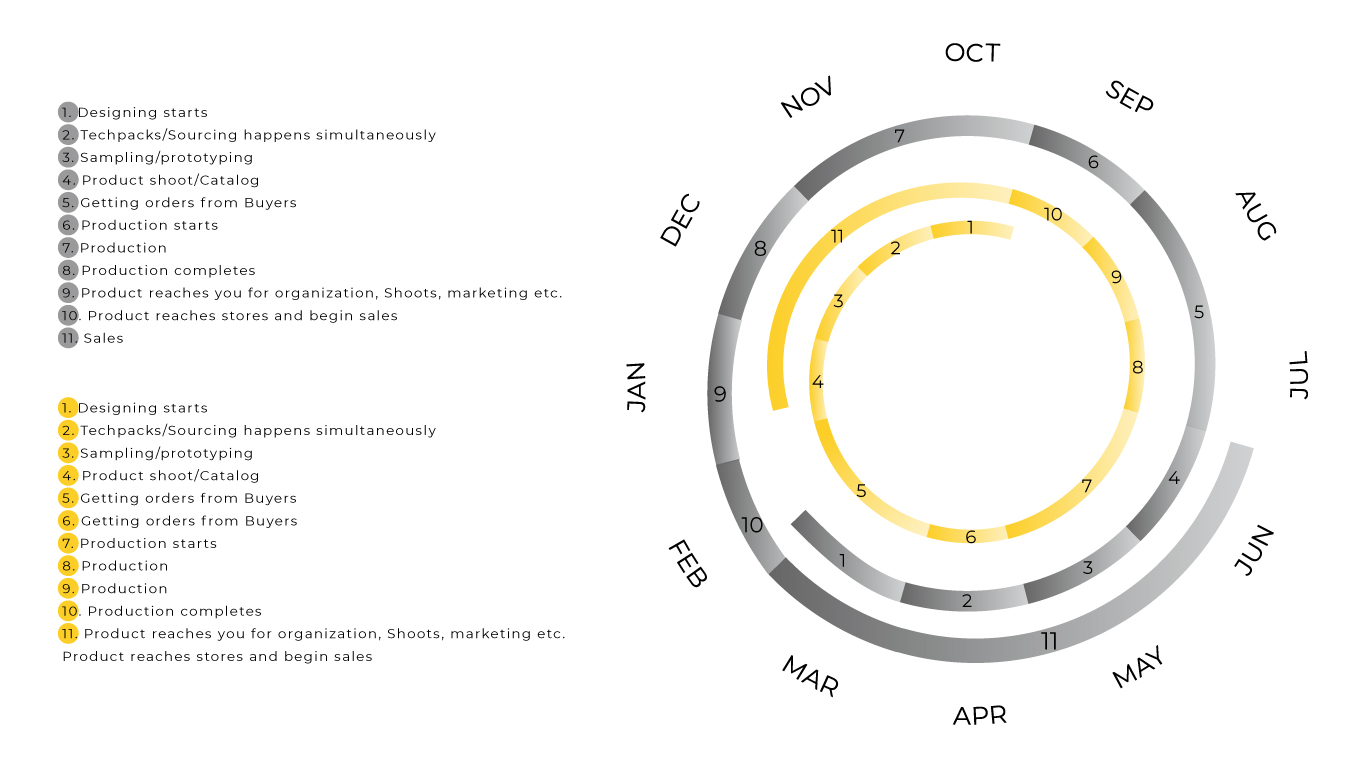
What should we include in the Fashion Calendar?
Designing
As we all know, any Fashion season planning starts with Fashion Design and research. It is important to understand the market, trends, buying purchase patterns to analyze what to include in the following collection and what to omit. The research includes a Fashion design forecast study which includes colors, trends, details, fabric, silhouettes, trims, etc. It is also important to see if you have any problems, for which you need to find solutions. For example, if this winter new bigger mobile phones were released, you need to make sure your summer clothes have bigger pockets to accommodate them. Also, once you have your research done, you’ll have a much clearer idea of what directions to take in terms of design, inspirations, concepts, etc. Then you sit down and compile your ideas into commercially viable designs. All this research and fashion design can take up to one month at least. Depending upon the kind of research you’re doing or the problem you intend to solve, this duration can extend a little bit more. At Deepwear, we have experienced Fashion industry experts who have seen the rise and fall of many fashion trends throughout many fashion seasons over the years and can help in consulting and guiding you with your Design and research phases to make better-informed decisions. To know more about our consultation packages, click here.
Fashion Tech packs
Fashion Techpacks are an integral part of the manufacturing process. Tech packs are technical documents that provide all necessary details, breaking down your design into simpler, more detailed parts for the fashion manufacturers to understand. Fashion Techpacks include everything from fabric details, Flat sketches, Measurements, grading details, Trim specifications, Stitch details, Embellishments/embroidery details, Print details and specifications, Pantone colors, Label/Tag details, and design files, Branding details, and Fashion Packaging specifications. Making the tech packs for your collection can take anywhere from 3-4 days to 30
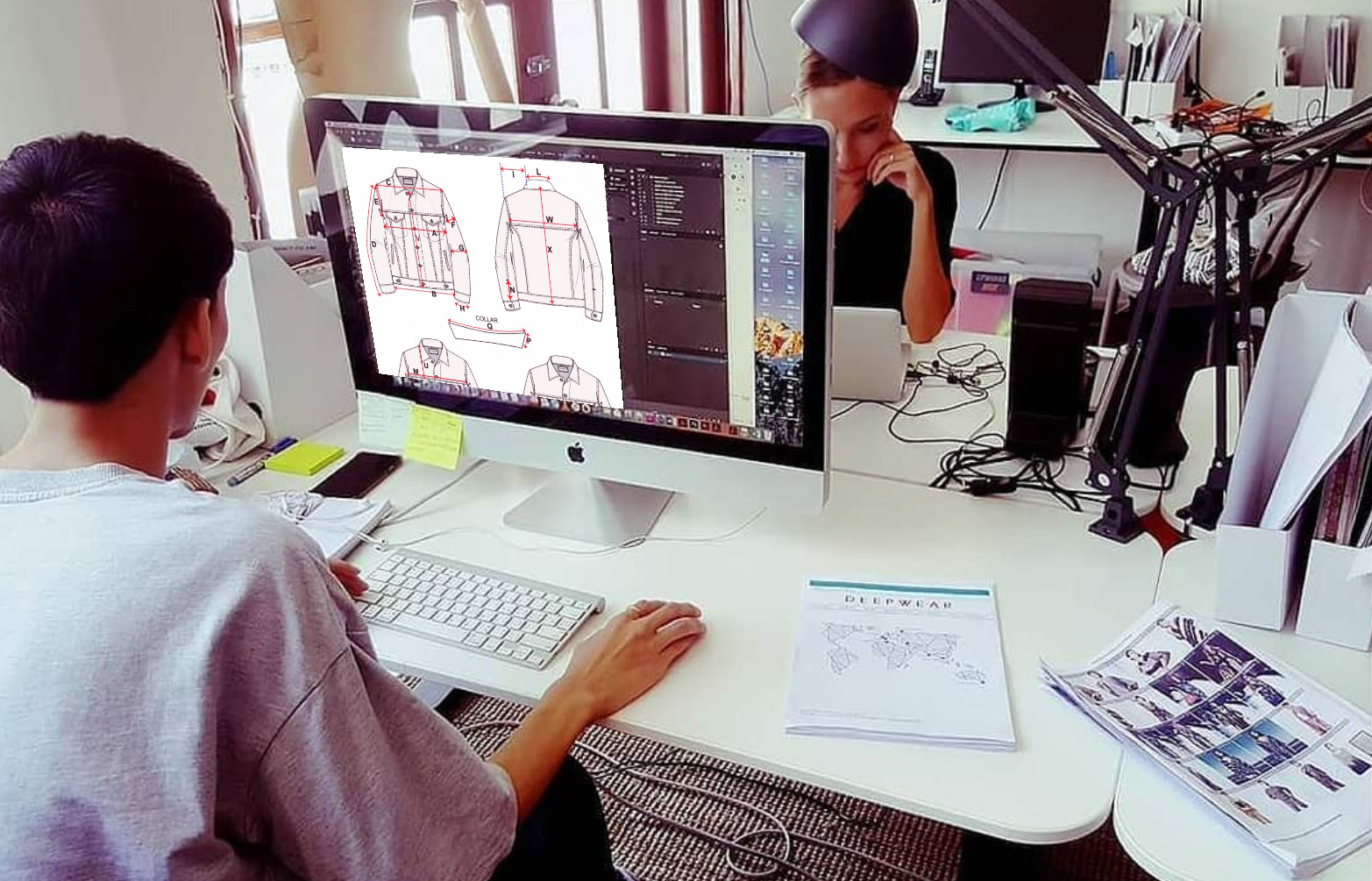
Sourcing
Fashion sourcing can start simultaneously with the design and tech packs, but Fashion sourcing can only end when the designing and proper tech packs have been finalized because it’s the only way to provide clear and precise quotations and to avoid last-minute surprises in production, development, and cost. As a part of sourcing, you or the sourcing company you collaborate with will look through multiple factories and suppliers, state your requirements, and get quotes from them. Then after comparing the options, the best, and most efficient factory will be chosen with respect to pricing, quality, location, Production criteria, timeline, and reliability. At this point, you will also be able to estimate the approximate cost. At Deepwear, we are committed to only working with suppliers and factories who are ethically, socially, and environmentally responsible, have good production facilities, and can provide us with reliable services. To ensure good quality fashion sourcing, our exclusive team visits every single factory personally to audit and analyze its standards and quality. Sourcing can be a complex process, and if not done professionally, bad sourcing can be easy access to getting scammed, also the production process can take much longer than required. We at Deepwear can collaborate with you for all your fashion sourcing needs. We have our own offices with our own team members in 15 countries around the world, who are dedicated to providing the best compatible factory for your brand, your budget, and the products you wish to manufacture. To check out our fashion sourcing services, click here.
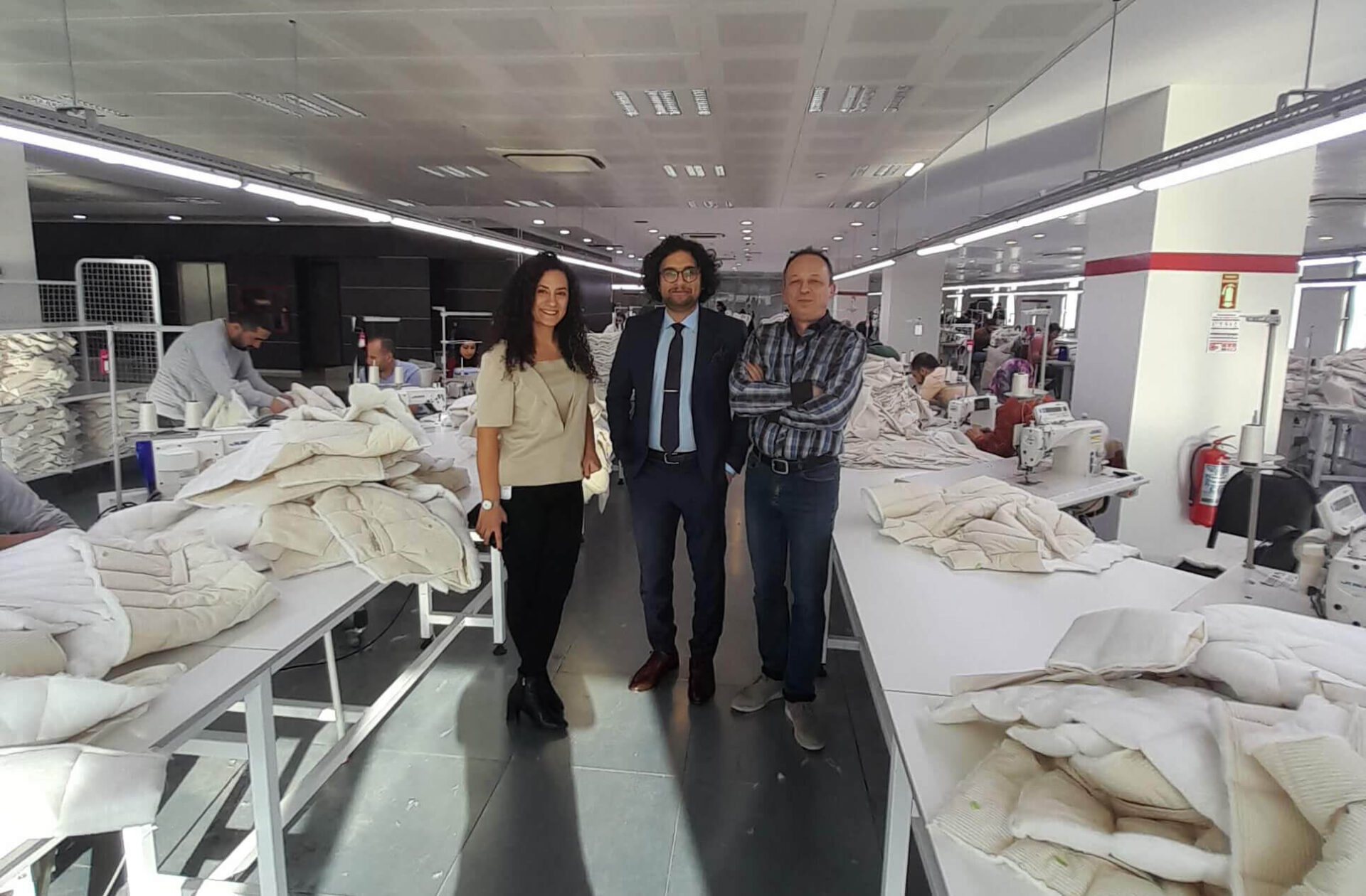
Sampling /Prototyping
Sampling follows fashion sourcing. This is an extremely crucial step since this ensures that the quality and finish of the products are up to the expected standards. Sampling before starting the full production makes sure the errors and confusions are minimized resulting in efficient costing and production. The time frame for this period can vary depending upon the complexity and details of your product. It also depends on how many sample runs you choose to take. Most projects require a sampling time frame of 15-30 days. But if your product has very specific details that need to be custom made, like for example getting a custom button mold made, the timeframe can jump up to 60 days to manufacture the custom mold and sample it.
Sampling is where you start seeing the actual translation of your designs into a product and while this can be really exciting, it is also is very important. This is where you can see the quality of your product, and can make the changes/corrections you require. It is important to understand that it’s normal for the first round of samples to not be up to your expectations, that’s the whole point of sampling. To see a test run and correct things for the final production. It is very crucial to inspect your sample and note down all the things you want to change or keep. Physically examining the samples is the most optimum solution, but sometimes, when manufacturing internationally, Sending samples back and forth across continents can be extremely time-consuming and can lengthen your Fashion calendar, which is why we suggest being there in person https://deepwear.info/sourcing/to check the samples. We understand, that doing that can not be possible at all times, which is why we at Deepwear, act as an extension of your team, hired by you to check if everything is perfect and up to your liking. We are physically present, on the ground to check every aspect of your production journey and to send you a detailed report of the progress. Contact us to know more about Deepwear’s sampling Quality control services.
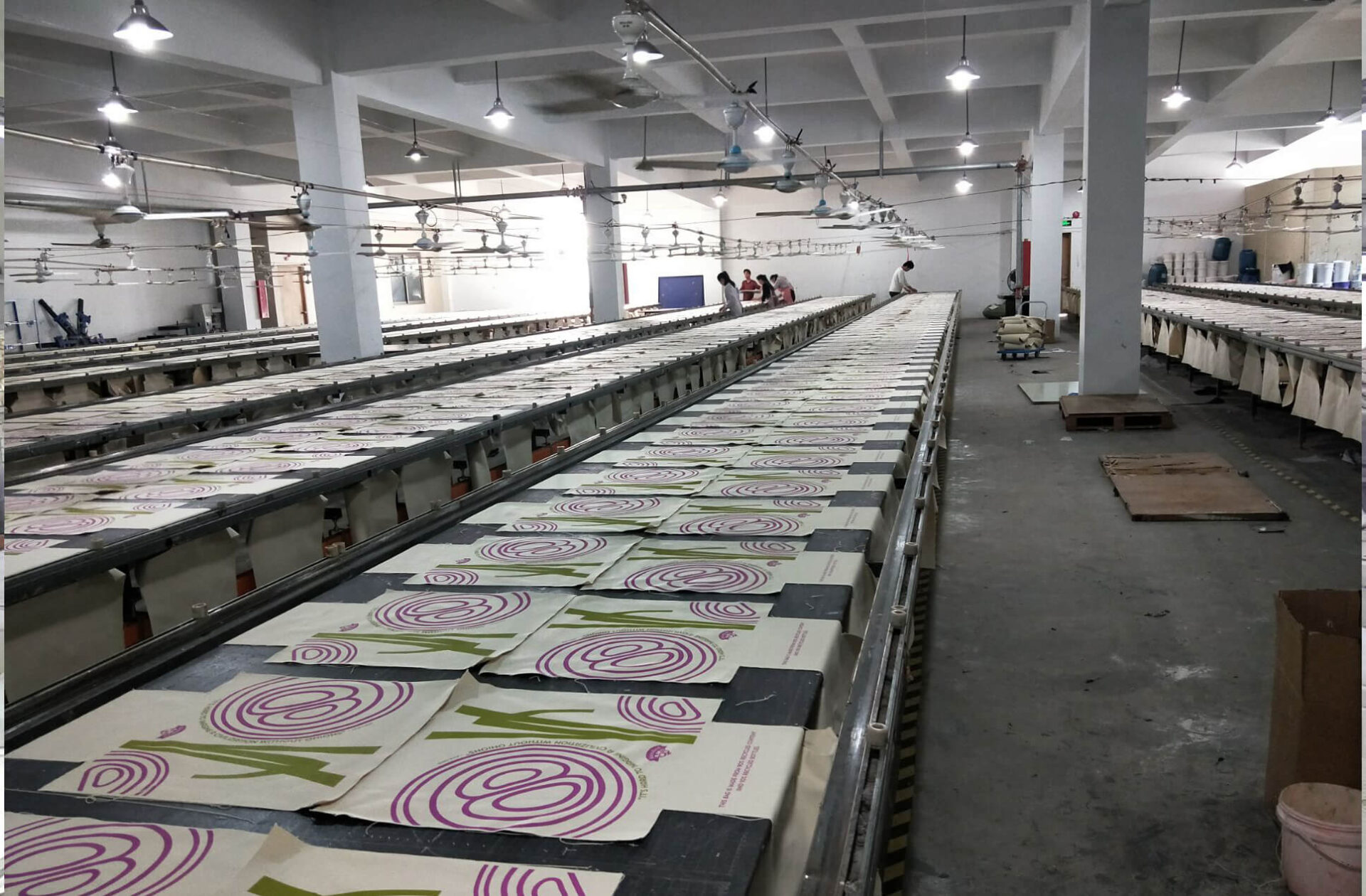
Production
Finally the production phase begins. On average the production process can take anywhere from 30-90 days depending on the complexity of your product, order quantity, time of placing the order ( Some holidays affect production), and even weather conditions at the location of the factory. Holidays like the Chinese Lunar Newyear are a major thing to consider if you plan on producing things in China and neighboring Southeast Asian countries. If you plan on producing in India, Diwali is an important holiday to acknowledge. Production in the European and other western countries is affected by their local vacation periods and Christmas holidays. All these factors must be considered while planning the time allocated for Production. It is important to continue the quality control process during the production process as well and not wait till the end of production to check things. Deepwear can offer intensive quality control and production management options where we also check products before, during, and also at the end of it before shipping the products to you. Shipping can take another 5-6 days from the East( China, India, Vietnam, Thailand, Indonesia) to the west ( Europe, North/South America) Shipping can extend a couple of days more if you are located in a less accessible/ remote area.
Post-production planning, Fashion Marketing, and sales- Post-production, you still have a little more work left before releasing the products to your clients. That needs to be acknowledged while planning the fashion Calendar too. Most fashion brands need at least 1 month to sort out and organize the new stock, click pictures and work on their marketing strategies. And so this is crucial too. The peak sales period is 3-4 months. If it’s Summer Spring fashion, Sales start from February and are at peak till April, after which in may they start seeing a decline. Similarly in Autumn Winter, Sales start in September, all the way till January where it starts declining.
Fashion Calendar Breakdown
With all the components in place, there is still something that affects how you plan your fashion Calendar. Your target audience also majorly affects the Fashion calendar.
B2C Vs B2B Fashion brands
- Depending on the type of brand you are, your fashion Calendar will be affected. If you are a B2C brand, you can start your planning 7-8 months in advance and that should work out perfectly, but if you are a B2B fashion brand, your timeline will be slightly different since you need to create a sample prototype, send out to buyers, get orders from them and then place your order for production.
Location
- Location – Seasons change depending on where you’re from. If you’re from Australia or Newzealand, you probably experience Christmas in summers on a nice warm beach, and if you’re from Europe or America, Your Christmas will be colder. The fashion seasons depend on this too. Countries south of the equator experience Summer from November to January and Winter from April to July, People living in the North have it vice versa. So depending on your target customer, your Planning will change. For example, in Australia, your spring-summer sales might be from November to January whereas, in Europe or America, it might be from February to May.
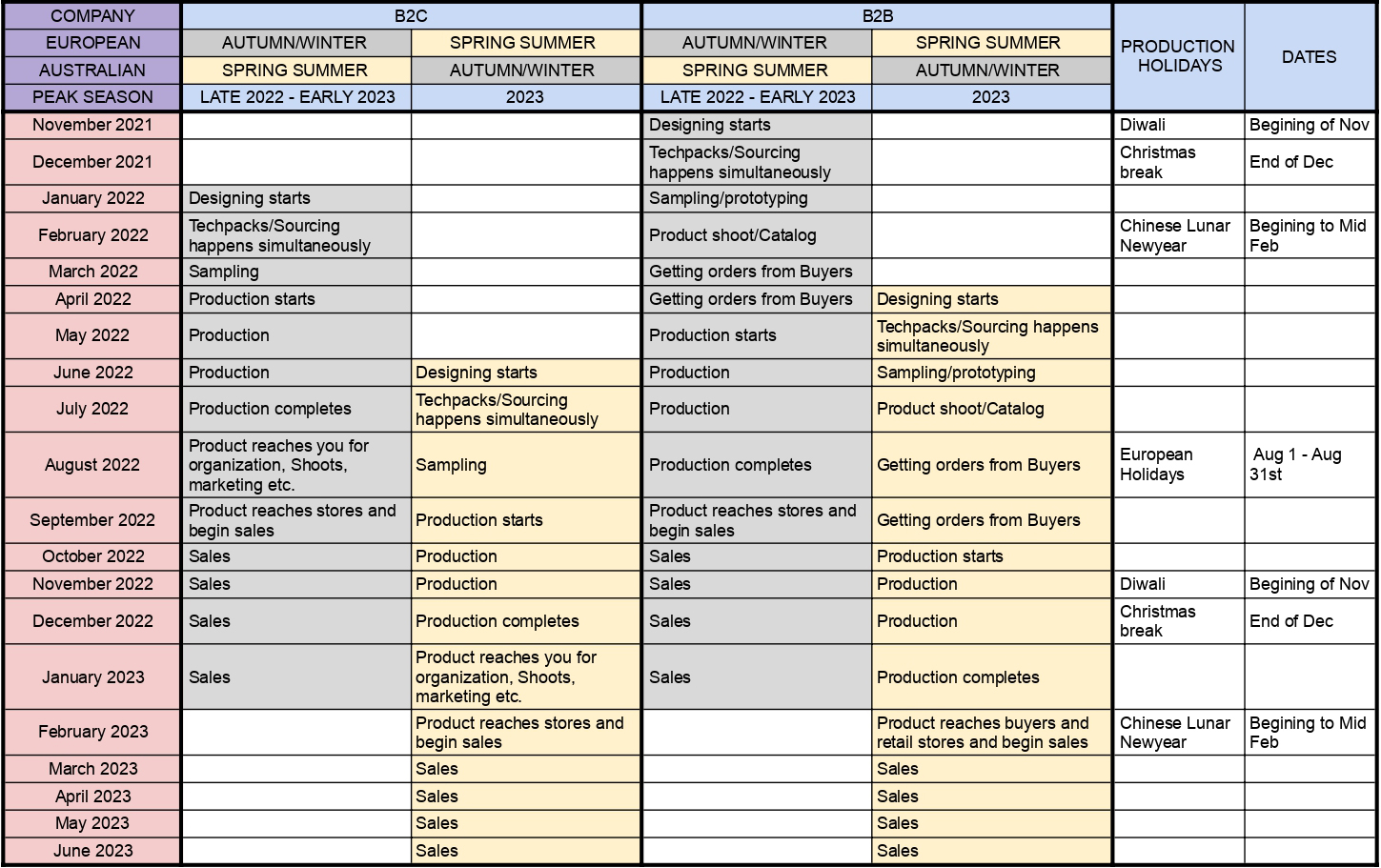
Seasonless Clothing
We also have a new and upcoming concept called seasonless clothing or trans-seasonal clothing which simply means creating products that easily transition from one season to another. A lot of fashion brands, houses, and big labels have started adopting the seasonless fashion concept which believes fashion should not be restricted to Seasons and can be creatively worn throughout the year.
The collections that adopt the seasonless path, have pieces that are versatile, evergreen, and adjustable. For example, a dress made of light chiffon or rayon fabric can be worn in the spring-summer months, but can also be layered and used in the autumn-winter season.
While seasonless clothing is still growing and hasn’t reached its peak yet, Whether you choose to follow the seasons or go seasonless, the formula stays the same, you start planning things 6-7 months before the product hits the shelf.
The fashion calendar ensures less confusion and better Supply chain management. While efficient Supply chain management is absolutely essential for fashion brands. Between limitless product categories, New emerging trends, changing lifestyles and markets, people in the fashion industry need to be more aware of the Fashion seasons and their respective fashion events. The Fashion Supply chain is sometimes much more complex than some of the other industries and that is why ensuring a maximum possible level of organization is indispensable.
How can Deepwear help you?
- Deepwear has an International team, which means we have people from all over the world, which also means we have people from all fashion seasons, and so it is easier to adapt to whichever fashion season/calendar you want to follow.
- Deepwear has its own exclusive team and physical offices in all major fashion production countries like China, Thailand, India, Vietnam, Indonesia, Morocco, Turkey, Portugal, Spain, Bulgaria, and fashion capitals like the UK, France, Netherlands, and America.
- Our on-ground presence during the entire fashion production process ensures that everything is checked on time, and doing that avoids errors in the later stages which saves a lot of time and makes the whole Fashion manufacturing process very time and cost-efficient.
- Sourcing for factories when you have to start from scratch can be extremely time-consuming, but at Deepwear, we have almost 25 years of experience, and that means we have over 25 years of contacts, and we know so many reliable factories ready to produce what you want. This saves us a lot of time, and also ensures safety, and helps us control the production process better.
- Coordinating between different teams and companies for various tasks like Consultation, Techpacks, Fashion Sourcing, Production, Quality control, Logistics can be a hassle and time-consuming. At Deepwear, we have 360º services, which means you can get all these services under the same roof, which means you get uniform quality services, and the time wasted in co-ordinating all these teams can be saved.
- We can also work with factories that have been sourced by the clients from various, in fact around 40% of our clients approach us with factories already contacted. Our job then is to check, supervise and audit the entire process, keeping the factories in line and having control of the production process instead of following what the factory tells us.
Any confusions you have regarding how to plan, manage and oversee your supply chain, let us help you. After all, Deepwear is dedicated to making the fashion supply chain more ethical, sustainable, organized, and efficient. To discuss your brand and projects send us an inquiry at enquire@deepwear.info
